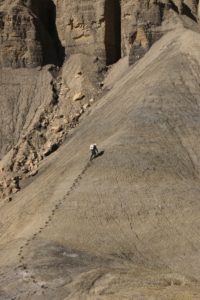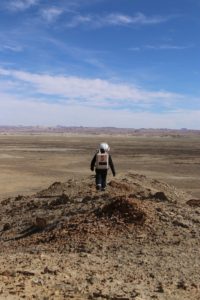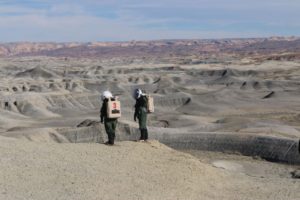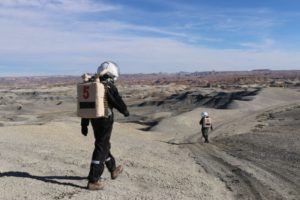Crew 176 Commander’s Report 23 March 2017
Natalia Zalewska
Commander Report
23 March 2017 – Sol 12
Dear Mission Support,
While we are heading to the end of our mission, we continue to maintain
our daily routine. Thus, we woke up today in the morning, had a breakfast
together as well as some of us completed psychological tests. We made sure
holter monitors work but due to the increasing fatigue of the entire team,
we skipped the sport activities.
Despite poor weather conditions, we undertook EVA as planned. This time
the crew members stayed in the close proximity of the habitat without the
need to use ATVs. The main focus was on the use of the rover Ares 2,
including in the role of the support tool when collecting geological
samples.
The Crew Engineer spent a significant amount of time working on the rover
and a corresponding trailer, and the Green Hab Officer was happy to
discover new plants in the pots. Also, just as every day, the entire crew
worked on preparing audio-visual data for both education and outreach
activities.
Starting from tomorrow, we will work on packing our staff, cleaning the
habitat and we will get mentally ready to leave. Our mood and teamwork is
still very good.
Best regards,
Natalia Zalewska
Commander, MDRS Crew 176








